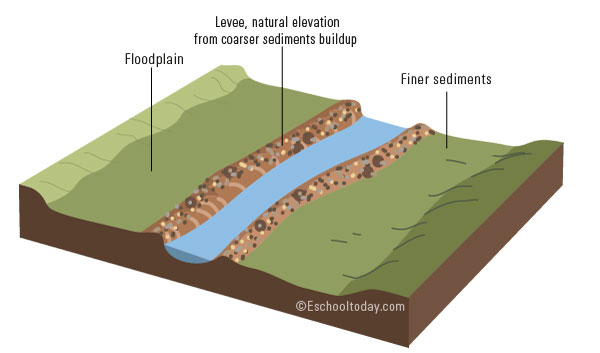- Landforms
What is a plain landform?
Plains are large areas of relatively flat topography and are common landforms on earth. A plain is a depositional landform. Plains can be found in coastal areas where rivers are slowly flowing, meandering, and depositing lots of sediments. Plains along the coasts are called coastal plains. Those found away from the coast are called inland plains.
One major type of coastal plain is the Floodplain. When rivers are in their lower course, they tend to overflow their banks. Repeated flooding results in sediments deposited all over the surrounding areas that flood. Flood plains are usually stratified (layered) in layers of sediments.
Consider the illustration below:

The river usually stays in its channel when it is not flooded. During floods, heavier, larger, and coarser sediments are deposited right at the banks of the river. Smaller and lighter sediments are carried farther from the river banks. After the floods, the bank of the river is raised as a result of the deposition. This naturally raised bit of the riverbank is called a levee.
Inland plains are slightly different. One feature of inland plains is that they stretch for many kilometers and are grassy. Grasslands are plains, and in the USA, they are known as prairies. In Asia and Europe, they are known as Steppes. Tropical grasslands are called Savanna. Some plains have forest trees, such as the Tabasco Plain in Mexico.
